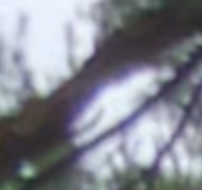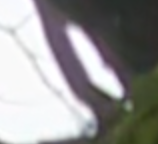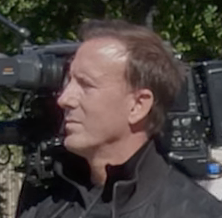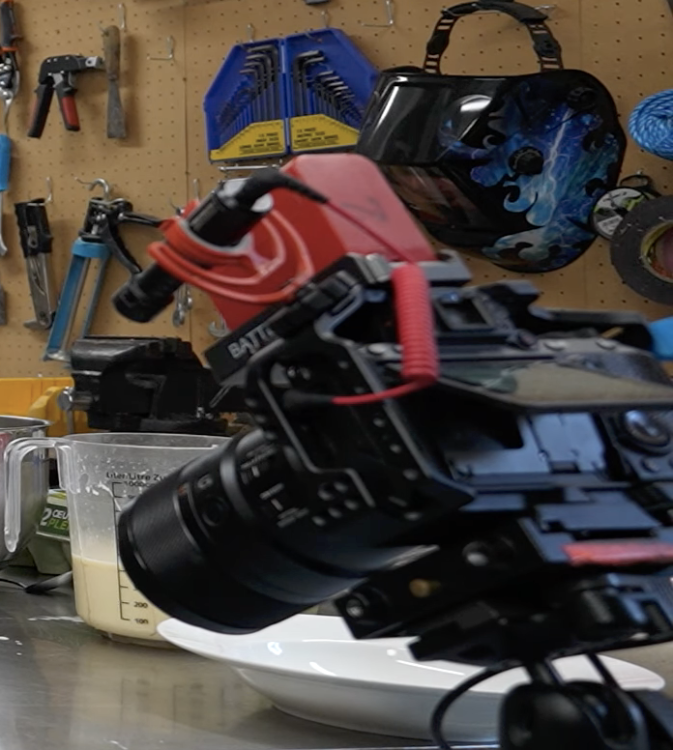-
Posts
8,027 -
Joined
-
Last visited
Content Type
Profiles
Forums
Articles
Everything posted by kye
-
Here's a test I did some time ago, downscaling an 8K clip to various resolutions then putting them on the same 4K timeline and uploading in 4K. The shot at the end puts them all side-by-side for direct comparison. There are differences, but even pixel peeing, they're pretty minimal. If you're watching something rather than talking tech or doing tests, then it doesn't matter, plus if you add a bit of sharpening to a lower resolution file then it can easily make up small differences. You're right that YT in 4K looks much higher quality than YT in 1080p, but it's a bitrate thing rather than resolution.
-
Just watched this video from Crimson Engine about camera trends, and he dropped an absolute bombshell.... "We shot and mastered The Devis Fortune [his recent feature film] in 4K, and then when it came time to deliver it to Amazon and iTunes, I was told they would only accept a 2K file, they would then up-res it for 4K delivery if that's what people wanted to watch". Link to the video at that point: I understand that this is a lower-budget film and not a blockbuster and I don't believe it was through a major distributor or studio, so maybe those films are actually uploaded in 4K, but..... How much actual 4K are people watching? Does anyone have more information on this? Wouldn't it be hilarious if all the people watching YT for free were demanding 4K at the minimum, when all/most/some paid content was all 2K.
-
You're probably already doing this, but in case not, my preferred order of operations is to take two images and try and make a general match first: Make both images black and white and then match levels of white points, black points, grey levels, and then contrast (in that order) Go back to colour and match WB of white points, black points, and then grey levels (in that order) Then using hue curves, match the hue v hue, hue v sat, and hue v lum curves (in any order - sometimes it takes a few passes) Then I apply that correction to a second pair of images and fine tune anything that doesn't look like it matches. Then I apply it to all the shots, and then just look at the whole lot together (or if you can't do that then just watch it on a fast speed) and stop to correct any shots that stand out.
-
A screen grab works as well, in a slightly different way. Here's some fringing, but it does seem to be well controlled: All lenses will exhibit some degree of CA - it's just a limitation on the various physics involved and especially on such wide angle lenses as these. It's not a criticism or attack. Also, people add CA in post when emulating film, so it's not always even a negative thing. The above grab shows slight over-sharpening, as does the below: It also depends on what you think the ideal amount of sharpening is, which is subjective. Personally, I prefer a high-resolution but low-sharpness image presentation, but everyone is different, depending on the needs of their project.
-
Looks like you missed both points I was making.
-
The existing lens may well be soft compared to a high-spec alternative, but I'd suggest that the images from the GoPro are bordering on over-sharpened already, so if the lens is swapped for a sharper one then that is likely to be a net-negative on the overall image quality. It might, however, reduce chromatic aberrations and fringing etc which would be an improvement. I'd be curious to see a comparison between the stock and third-party lenses. I'd also be curious to see a 1:1 crop on the 5.3k files you're recording - could you post a short clip to YT? Instead of downsampling the 5.3K file onto a 4K timeline could you simply put the 5.3K file onto the timeline at a 1:1 scale (which would crop part of the original image). If you're able then including a 2:1 where it's zoomed in to 200% would also be nice.
-
Ha ha... I guess it's guaranteed to work if I'm filming in my fridge then lol.
-
What was the ambient temperature during the test? Please tell me it was above 35C 🙂
-
Yeah, I didn't realise that there was already a thread on it. Let's use the other one. Handy hint - if you use the + button to multi-quote and then browse to another thread you can quote posts from the original thread in the other one, should that make sense.
-
To me, all cameras give with one hand and take with the other. Those that have some great features pay with other features, and if they have a lot of great features then you pay with your wallet and probably with the size of it. In many ways the best camera is the one that is 7.5/10 in every category because then it doesn't have some 'fatal flaw'. In that sense, the RS is fine - middle of the pack perhaps. How I read something like that is that it's not going to be a problem, unlike if it was notably bad.
-
Gerald Undone tested the RS and found it to be reasonable (unlike previous Sony APSC offerings). Seems like a good overall camera without any significant downsides, other than it potentially being a new system to buy into.
-
Sony have released the FX30. Key specifications Oversampled UHD 4K (6K capture) up to 60p UHD 4K/120p capture with additional 1.62x crop In-body image stabilization 10-bit 4:2:2 or 4:2:0 capture in a choice H.265 or H.264-based AVC formats S-Cinetone color profile S-Log2 / S-Log3 with uploadable LUTs for previewing or applying to footage '16-bit' Raw video output No mechanical shutter mechanism Front and rear tally lamps Anyone interested in it?
-
Extremely sorry to hear this news. Take care of yourself.
-
Thanks Davide. I suspect it could be either, he used to use a GH5 but I haven't gotten a look at his setup for some time and was curious. He still does a lot of stuff hand-held when he goes into restaurant kitchens and films food preparation etc so the stabilisation and AF are a big deal. It makes sense he'd be rocking a Sony with 16-35 for those, with the AF modes and also the IBIS, plus if it's the 16-35 F4 he'd have OIS on top of that.
-
Yeah, I don't think that the Japanese nor the French have a monopoly on stupidity and other human failings! All countries / cultures have their pros and cons. It's just personal preference that makes each of us prefer one over the other 🙂
-
Interesting stuff. Pulling out a few select faces to look at detail and skintones etc.... bearing in mind these are all very small in the frame so these are blown up quite significantly. From 2:04 From 3:55 These are all excellent results! Considering that the Prores tests of the iPhone 14 show that their implementation allows the Prores codec to do the best job yet of preserving the complete desecration that the iPhone performs on its image!
-
It's from one of the YouTubers I watch and this is the best look I've gotten at his setup in a long time. Source:
-
Everyone is entitled to their opinion, it would just be nice to have more than one or two comments in a row in a Panny thread that didn't talk about AF. It's like in the entire world of film-making that nothing else exists. It makes it so that nothing else can be discussed, doesn't add anything new to the discussion and just wastes everyones time.
-
Yes, the FX6 is a much more 'complete' cinema camera in that way, no doubt. I mentioned it just because I think that's the only real venture that Panasonic has made in the direction of a more cinema camera since the EVA1, which was what - 4 years ago. Considering the headway that other brands have made in the small cine form-factor (Komodo, C70, FX6, etc), maybe there's a place there for an appropriately sized Panasonic camera? Would be interesting to see what they'd come up with.
-
That's an interesting comparison - not one I'd contemplated before, but makes sense.
-
...or who don't know enough about cameras to have moved on from AF being the only topic they think matters. Do we have any idea how things like the BGH1 sold? I heard basically nothing online about it, so I'd assume that the market for Panasonic small cine-style cameras probably isn't that big. and if it didn't sell then Panasonic won't be rushing into that segment either.
-
Which means that Sony and Canon can afford to do it and Panasonic absolutely cannot. I find it amusing that people are so self-entered when it comes to what they want. As a customer they declare that the best strategy for a brand is to basically do everything they could possibly want, and then as a business, those people will turn around and criticise their own customers for not understanding the realities of what it takes to run a business. Most of the claims that people on here make about cameras are equivalent to the delusional demands that a bridezilla would make at the first sign that the work doesn't revolve around them. *shrug* Panasonic makes cameras exactly the same as any other manufacturer - some good points and some bad points. If you want good AF then Canon will gladly accept you as a customer once you've been knocked in the side of the head with the cripple-hammer, or go to Sony who will gladly have you as a customer once you've been smashed in the wallet with their price-hammer.
-
Lots of scam listings in the vintage lens market too. Anything expensive seems to be fair game unfortunately.
-
TBH, I think this is probably well into the realm of diminishing returns. The way I see it is that there's stuff that happens before you colour grade and stuff that happens afterwards. 10-bit (or more) matters when you're capturing footage that you need to significantly alter in the colour grade (log, linear) but after it's in a 709 space I think it becomes far less important, unless you're capturing in a 709 profile and plan to heavily grade it after that. I've found that there's essentially three groups when it comes to colour accuracy: The general public, where there is zero guarantee of quality, adherence to standards, or consistency in what they're looking at. They also (mostly) don't care, and most probably can't tell the difference between the colour of a Sony A72 and an Alexa. Professional colourists, where there is almost no limits to the degree of accuracy and the investment in minutia around this, and is often accompanied by a failure to understand the practicalities and compromises of the world. Their clients are occasionally directors or producers who have some of the most refined taste and colour perception imaginable, so they are aspiring to be good enough for the worlds best. They will argue to the death about things you've never heard of. Us practical folks in the middle trying to do what we can but without it being the entire universe that we live in. We care so much more than the general public that they can't understand a word we say, and we care so little in comparison to the pros out there that we can't understand almost anything they say. If you've got a vaguely colour accurate monitor setup in a vaguely controlled environment then I think you're going above and beyond for what most of the audience really cares about. For this, 8-bit monitoring is totally fine.
-
I've read quite a lot about the customer strategy for various companies and your above post (and the one on the previous page) have a couple of things that stand out to me. The first is from your previous post where you outline your own style and seek clients who fit with that style. This is an excellent approach, and as you have noted, tends to give you customers you enjoy working with. The second is the idea of the wedding album and what is associated with it. My thought is maybe you should consider providing one as a standard offering in all your packages? I say this because customer strategy can often contain things that are counter-intuitive, like giving the customer a better experience by not giving them what they want (because they are wrong in their assumptions about which things create which outcomes). Reading between the lines on your posts about your business, you are fully booked and are in the position to turn away clients. If you included a wedding album in all your packages and added the cost of the album (printing and all the admin required by you) to each package, maybe you could keep the same profit over less bookings? Or maybe you wouldn't keep the same profit per booking but might have more referrals and thus make a saving in any PR and sales efforts? Lifetime Customer Value and all that. I'm reminded of this post from Noam Kroll about having less clients but of higher budgets: https://noamkroll.com/how-i-built-a-7-figure-production-company-with-no-advertising/ In terms of tech, the aesthetic is made from the tech. The tech isn't a side-topic - it's not even a separate topic by itself (contrary to how it is discussed online) it is simply the details of telling the tools to create the result you want. If you are bored by it then you have forgotten why it is important and lost sight of the objective. The people who are truly great, in any discipline, obsess over the minutia involved because the final outcome is the product of the thousands of choices made during the process. Perhaps the biggest issue with modern film-making is that people have forgotten these are tools, not toys.










